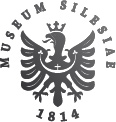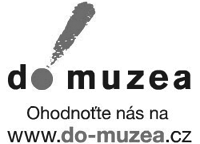ČASOPIS SZM SÉRIE B – VĚDY HISTORICKÉ
LXVII/1–3/2018
STUDIE/STUDIES
Ondřej KOLÁŘ: První mezi rovnými: Sebeprezentace pěšího pluku č. 1 „Kaiser und König Franz Joseph I." 1914–1918 / First Among Equals: Self-Presentation of Infantry Regiment No. 1 "Kaiser und König Franz Joseph I." 1914–1918
(s. 3–12)
Abstract
The article focuses on the representation of the Opava Infantry Regiment in the years of the Great War. Attention is concentrated on various forms of self-presentation, whether official events (publications, exhibitions, commemorative badges, regimental jubilee) or ordinary soldiers' initiatives. The research also includes support and promotional activities in the background (articles in the press, collections, building of monuments).
Keywords: Army, Austria-Hungary, Franz Conrad von Hötzenndorf, Infantry Regiment 1, Opava
Marie GAWRECKÁ: Slezsko a vznik Československé republiky v roce 1918 / Silesia and the Establishment of the Czechoslovak Republic in 1918
(s. 13–26)
Abstract
The study focuses on the complicated situation in the region of the former Austrian Silesia after the proclama¬tion of the independent Czechoslovak state in 1918. The international situation and the difficult national relations in the area raised the question of the future of the Silesian Territory, which was perceived by the representatives of the Czech, German and Polish ethnic groups at a completely different level. While the Czechs proclaimed their belonging to the Czechoslovak state, the Germans declared the newly established Sudetenland province as part of the so-called German Austria, and the Poles in the Těšín region expected that Eastern Silesia would become part of the new Polish state.
Keywords: Czechoslovak state, Czechs, Germans, the Hlučín region, Poles, Silesia, Sudetenland, the Těšín region, the year 1918
Pavel ŽÍDEK: Změny v Obchodní a živnostenské komoře v Opavě v době vzniku Československé republiky
/ Changes in the Chamber of Commerce and Trade in Opava at the Time of Establishment of the Czechoslovak Republic
(s. 27–43)
Abstract
In the course of less than a century of its existence, Chambers of Commerce and Trade represented significant institutions of the economic life of the Habsburg Monarchy and the Czechoslovak Republic. This was also the case of the Opava Chamber. The study focuses primarily on the summary of the substantial changes that took place in the Opava Chamber of Commerce and Trade from the declaration of the Czechoslovak Republic in October 1918, when the mode of membership of the Chamber changed fundamentally, as the members elected by the Ministry of Industry, Commerce and Trades (MPOŽ) replaced the formerly elected members. Another consequence of the establishment of Czechoslovakia was the penetration of Czech representatives into the hitherto entirely German Chamber. From many areas of activity of this institution, the changes are brought closer by, for example, its involvement in the support of vocational education, in which the strengthening of the members of the Czech nation, through the establishment of the new state, was significant.
Keywords: commerce, vocational education, Chamber, change, Silesia, trade
Eva VOJKOVSKÁ: Bývalé arcivévodské statky Těšínské komory za vnucené správy československého státu v letech 1918–1923 ve světle některých pramenů Zemského archivu v Opavě / Former archducal estates of the Těšín Chamber under the forced administration by the Czechoslovak state between 1918 and 1923 in the light of some sources from the Land Archive in Opava
(s. 45–59)
Abstract
The article deals with the issue of forced administration of the Těšín Chamber on the territory of the Czechoslovak state between 1918 and 1923 on the basis of some sources from the Land Archive in Opava. It captures the process of taking over the property of the Těšín Chamber using forced administration by the Czechoslovak state at the time of formation of the national state and the complicated international situation. The text outlines the economic situation and valuation of the Frýdek estate and the Czechoslovak part of the Těšín Chamber. The aim is to describe the status and use of the buildings, chateaux, farm buildings and food factories at the time of the forced administration.
Keywords: Těšín Chamber, Frýdek estate, the Region of Těšín, border disputes, forced administration, Friedrich Habsburg, confiscation, chateau, Frýdek, Mosty u Českého Těšína, Český Těšín, Jablunkov, Chotěbuz, Svibice, Vendryně, forest districts, farmyard, buildings
Květoslav GROWKA: Diskrepance mezi lety 1918 a 1938 na Jesenicku z pohledu faleristiky / The Discrepancy between 1918 and 1938 in the Jeseník Region from the Perspective of Phaleristics
(s. 61–72)
Abstract
Phaleristics is an interdisciplinary auxiliary historical science that examines award items, i.e., orders and decorations, their creation and awarding. On December 10, 1918, the Czechoslovak Republic banned the Austro-Hungarian war decorations without compensation, which many participants in the First World War from the Jeseník region considered to be detrimental. Thereafter, they paid more heed to the Nazi propaganda, which included, after the Munich Agreement in 1938, the mass awarding of German medals, for example the World War 1914 – 1918 Cross of Honour for front fighters.
Keywords: award items - war veterans - The First World War
Pavel ŠOPÁK: Československé zemědělské muzeum 1918–1938 a jeho pobočka v Opavě / The Czechoslovak Agricultural Museum 1918–1938 and its Branch in Opava
(s. 73–94)
Abstract
The jubilee text recapitulates the history of the provincial branches of the Czechoslovak Agricultural Museum in Opava and partly also in Frýdek; it is a reminder of the political context of the formation of the provincial branch in Opava, important personalities of agricultural museums and the specifics of agricultural museums. The text is supplemented with several editions of historical texts relating to the existence of the Agricultural Museum in Opava.
Keywords: Czech Silesia, Opava, Frýdek, Agricultural Museum, Agrarian Party, Zika František, Drahný František, Kacíř Alois, Vochala Joža
Michael RATAJ: Dopady „osmašedesátého" na profilaci okresního týdeníku Nové Opavsko / The Impact of "1968" on the Profiling of the District Weekly called Nové Opavsko
(s. 95–125)
Abstract
This paper commemorates the 50th anniversary of the invasion of Warsaw-Pact armies to Czechoslovakia. It focuses on the local newspaper Nové Opavsko (New Opava Region) and its profiling in 1968 and the subsequent period of early 'normalization.' It further provides answers regarding the role Nové Opavsko newspaper played during the period known as the Prague Spring, including the degree to which it maintained the official party policy, whether it became independent of its publishers and the degree to which it contributed to a freer atmosphere and the democratization of society in the Opava district. The paper also includes a content analysis of the newspaper known as Svobodné Opavsko (Free Opava Region), published towards the end of August 1968 in place of the Nové Opavsko newspaper that may have been considered a symbolic journalistic 'product of the Prague Spring' – an uncensored medium. It also contains biographical notes regarding journalists, their collaborators and relevant district officials from the Communist Party of Czechoslovakia.
Keywords: newspaper, journalist, Prague Spring, Communist Party, Opava, weekly Nové Opavsko (New Opava Region), Svobodné Opavsko (Free Opava Region), OV KSČ (District Committee of the Czechoslovak Communist Party) Opava, ONV (District National Committee) Opava, Silesia
Marta ŠOPÁKOVÁ: Škody způsobené okupačními vojsky podniku Státní lesy (Severomoravské státní lesy) v Krnově v roce 1968 a v letech následujících / Damage caused by the occupation troops to the company "Státní lesy" (State Forests) / Severomoravské státní lesy (North-Moravian State Forests) in Krnov in 1968 and in the following years
(s. 127–146)
Abstract
Damage caused by the stay of the Soviet Army in 1968–1991 to the forests under the management of the State Forests (North-Moravian State Forests) in Krnov; recording and quantifying damages; compensation for the damages caused and the liquidation of its consequences.
Keywords: 1968, North Moravia, Silesia, Krnov, Frenštát pod Radhoštěm, Krnov State Forests, North-Moravian State Forests Krnov, Soviet Army, 1968, Soviet Army Withdrawal
Svatava URBANOVÁ: Paměť českého Slezska v trojúhelníku folkloristiky – umělecké literatury – historiografie / The Memory of Czech Silesia in a Triangle of Literary Folklore – Artistic Literature – Historiography
(s. 147–165)
Abstract
This study is concerned with the relationships between three special communication circles, which are structured differently internally, function according to their own rules, but which can influence and enrich one another. If we accept this concept and begin to think about the mutual connections between literary folklore and artistic literature with a link to the region of Czech Silesia in a time frame limited to the last hundred years, we easily find a connection between folklore (folk culture), artistic literature and history, and this not only in terms of territory, but also in terms of narrative tradition. The methodological starting point here becomes memory studies and in particular the ideas of Paul Ricoeur and his views on the relationship between historical and fictional narratives.
Keywords: Memory, History, Literary Folklore, Artistic Literature, Historical Discourse
MATERIÁLIE/MATERIALS
Libor Martinek: Korespondence Wilhelma Przeczka s Jindřichem Zogatou z let 1981–1992, I. část
(s. 167–192)
JUBILEA/ANNIVERSARY
(s. 193–254)
Ernst Kuttler a syn – poslední varhanáři rodu Kuttlerů (Jiří Krátký), Andělín Novák a jeho přínos hlučínskému muzejnictví (Jana Nevřelová), Emeritnímu řediteli Slezského muzea a historikovi Vilému Plačkovi k životnímu jubileu (Ondřej Haničák), Rudolf Kristián a kultura Opavy a Moravské Ostravy před rokem 1938 (Pavel Šopák), Vzpomínka na Janu Indrovou (Marta Šopáková), K padesátému výročí muzikologického pracoviště Slezského zemského muzea (1967–2017) a k osmdesátinám jeho zakladatele. Ad honorem Caroli Boženek. (Markéta Haničáková), Adolf Emil Vašek – intelektuální biografie (k 60. výročí úmrtí) (Pavel Šopák), Jubileum PhDr. Karla Müllera (Pavel Šopák), Erwin Weiser – k půlstoletí od úmrtí (Ondřej Kolář).
RECENZE/REVIEWS
(s. 255–266)
Jaroslav LÁNÍK – Tomáš KYKAL a kol. (edd.), Léta do pole okovaná 1915. Svazek II. Noví nepřátelé, nové výzvy (Vojtěch Kessler), Lenka RYCHTÁŘOVÁ, Bezručovi sláva. Historie bezručovských oslav a výročí ve světle dochovaných uměleckých památek (Zdeněk Smolka), Pavel ŠOPÁK (ed.), Andělín Grobelný: vzpomínky (Lukáš Průša), Radim JEŽ – David PINDUR a kol., Dům, palác a zámek v hmotné kultuře Slezska / Dom, pałac i zamek w kulturze materialnej Śląska (Jiří Jung), Ondřej KOLÁŘ a kol., Slezsko a Ostravsko 1918–1938 (Martin Krůl).
KRONIKA/CHRONICLE
(s. 267–285)
Náhodný nález kopí z doby bronzové v Kyjovicích, okr. Opava (Zbyněk Moravec), Mistrovství Evropy preparátorů 2018 v rakouském Salzburgu (Pavel Petr), Workshop Problematika sanační konzervace-restaurování (Oldřich Schejbal), Helena Zápalková, Malíř sběratel. Kresba a grafika ze sbírky Miloslava Holého, ed. Poklady ze sbírek Muzea Olomouc (Pavel Šopák), Na okraj dvou jubilejních výstav v Muzeu města Brna (Ondřej Kolář), Konference Textil v muzeu (Martina Polomíková), Elegie moderny v Památníku Petra Bezruče (úvodní slovo k zahájení výstavy 21. srpna 2018) (Pavel Šopák), Vzpomínka na minulost: Alois Bauch (1867–1938) ve Vidnavě (Pavel Šopák), Obnova varhan kostela sv. Valentina v Příboře (Jiří Krátký).
Poslední aktualizace článku: 19.06.2020
Vytisknout celý článek







